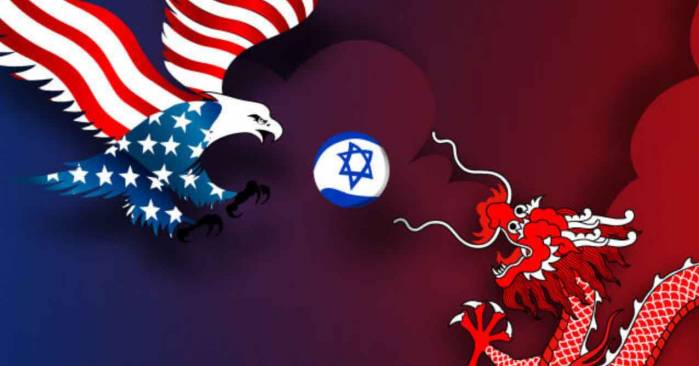How much de-risking will ever be enough? Kurt Campbell, U.S. President Joe Biden’s lead Asia diplomat, hinted in a recent interview that the United States was nearly done with new rules limiting Chinese access to technology and investment. “We have tried to make clear that there is a difference between a narrow de-risking and a broad decoupling,” he said. “At the end of this effort, the idea is to begin consequential diplomacy with China.” Yet almost by definition, the narrow measures introduced so far only moderately reduce risks related to China, especially in scenarios involving a military conflict with Beijing. As a result, demands in Washington policy circles for more stringent measures targeting China are likely to grow, creating a downward de-risking spiral that was not originally intended.
The notion that de-risking might have a natural end—a place where risks relating to China come back to manageable levels—is alluring. Biden’s team recently unveiled long-delayed measures limiting U.S. investment in Chinese technology companies. Following intense internal debate, the rules were drawn relatively narrowly, touching only a handful of areas, including artificial intelligence. Elsewhere, there is continued evidence of de-risking in semiconductors. In July, Taiwanese chip maker TSMC announced plans to build a new €10 billion plant in Germany. Part of wider attempts to disperse global production, the move aims in part to curb risks of shortages in the event of a future conflict over Taiwan, where most advanced semiconductors are made.
All this reflects a range of western dilemmas over how far and how fast to cut back connections with China. Many find solace that talk of outright de-coupling has been abandoned. De-risking, a term first popularized earlier this year by European Commission President Ursula von der Leyen, has become widely used instead. This appears to strike a sensible middle ground, avoiding the prospect of a ruinous total economic split from China. De-risking is meant to focus narrowly on a small range of strategic industries, from pharmaceutical supplies to electric vehicle batteries. Typically, new measures aim to reduce vulnerabilities stemming from excessive reliance on Chinese supplies, which could be exploited by Beijing to gain leverage in an international dispute, with those supplies perhaps even cut off entirely in a crisis.
Semiconductors are only the most important example, with a particular focus on TSMC, the world’s largest producer. The chip giant is midway through a push to globalize manufacturing, set off by pressure to diversify production from Taiwan. In addition to its German plans, the company is ploughing $40 billion into new U.S. facilities while building others in Japan. By 2025, TSMC will make about a fifth of its advanced chips outside Taiwan, up from less than a tenth only a few years ago. Other companies are taking similar measures. Intel is also planning a new plant in Germany. UMC, another Taiwanese group, is increasing production in Singapore. The resulting shift is significant. The United States, for example, could control as much as 16 percent of global chips capacity by 2025, up from around 10 percent last year, according to Boston Consulting Group.
All this pleases Western politicians. It suggests de-risking policies are working, reducing reliance on chips made in Taiwan, and protecting against a future conflict. In private, Taiwanese semiconductor executives are less happy. Taiwan remains an ideal place to build advanced chips. TSMC’s gigantic, expensive factories on the island are nestled within a unique ecosystem of suppliers and skilled workers that is hard to replicate elsewhere. In truth, the last thing they want to do is build chips in the United States, where manufacturing is expensive and skilled labor scarce. TSMC has already blamed labor shortages for delaying the start of production at its new facility in Phoenix, Arizona, until 2025.
In truth, TSMC tends to launch these new facilities under various forms of duress. The United States remains Taiwan’s most important diplomatic partner. If U.S. leaders want TSMC to set up a new factory, it is hard for the company to say no, especially when tempted by generous incentives, including the subsidies and tax credits in Biden’s $50 billion CHIPS Act. Just as important is pressure from clients. Large chip customers like Apple are also being pressed to reduce supply chain vulnerabilities. Relying on a handful of factories in Taiwan for most of their high-end chips looks risky. Clients like Apple likely told TSMC to start making their chips closer to home, or risk them buying more from rivals like Intel or Sams.
By James Crabtree, a columnist at Foreign Policy and the executive director of the International Institute for Strategic Studies-Asia.





